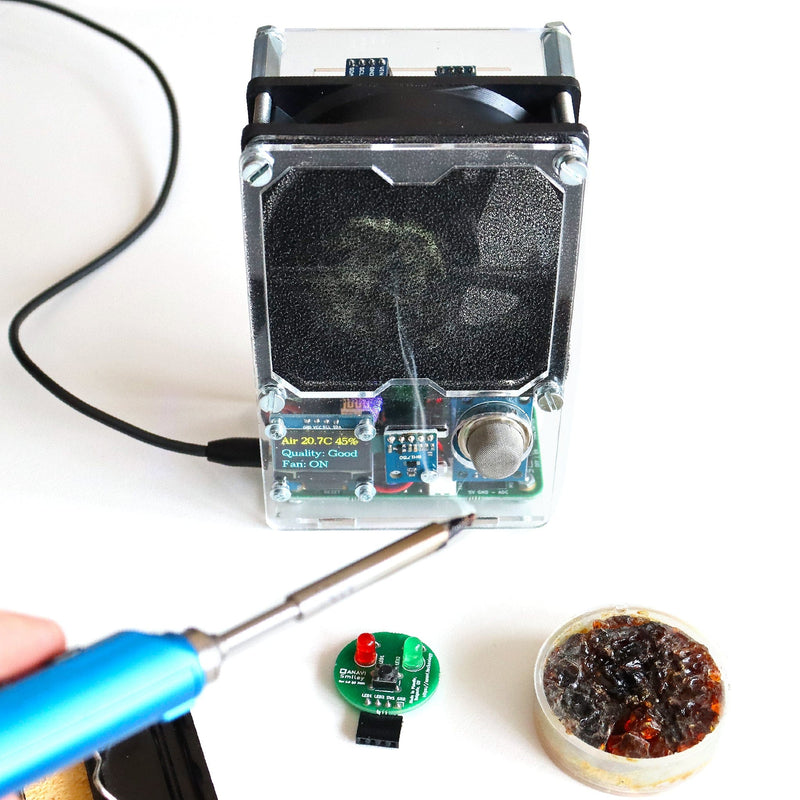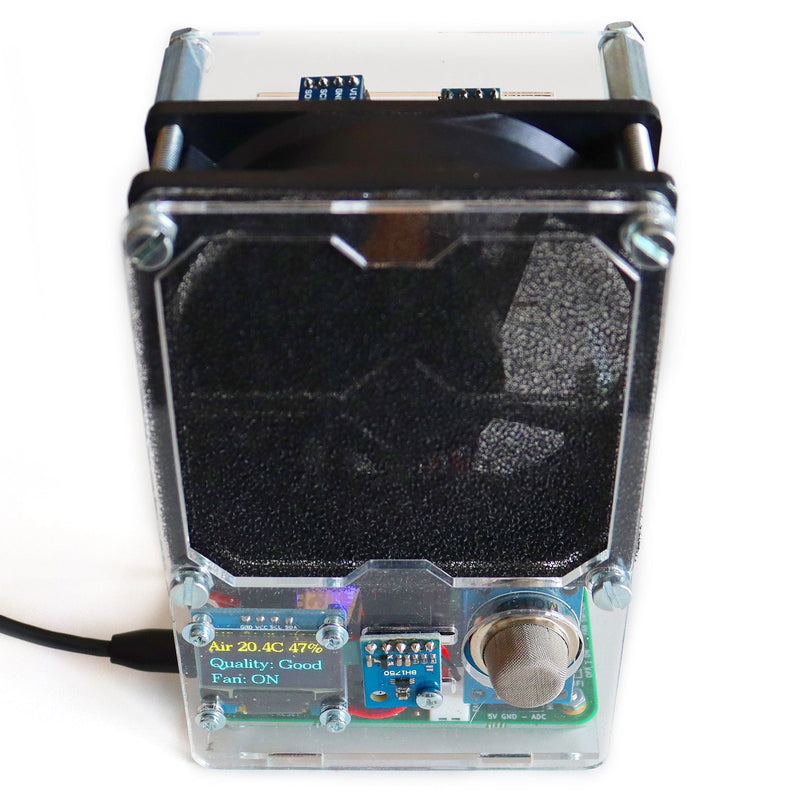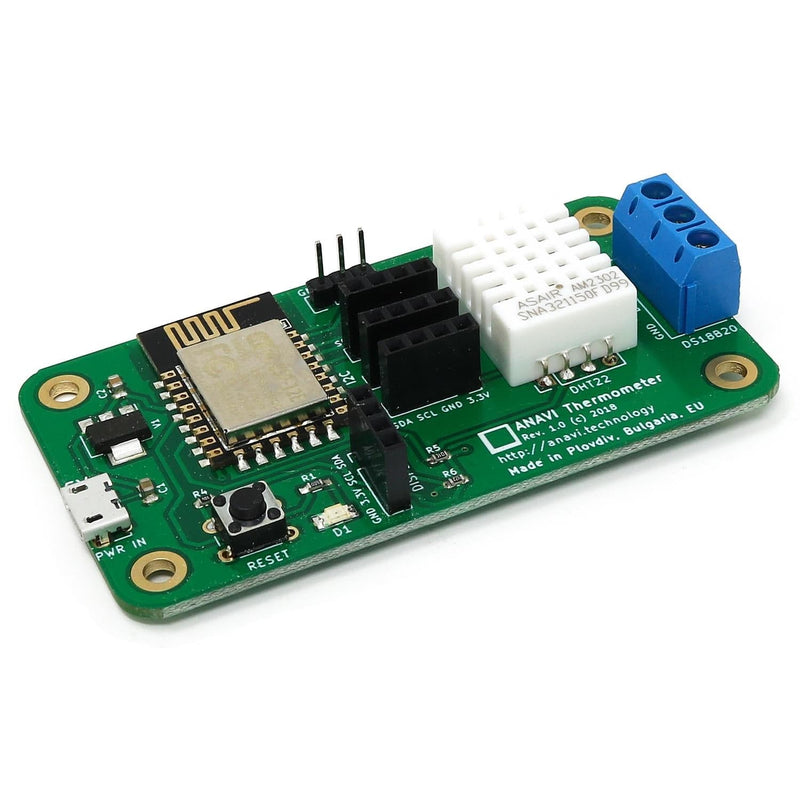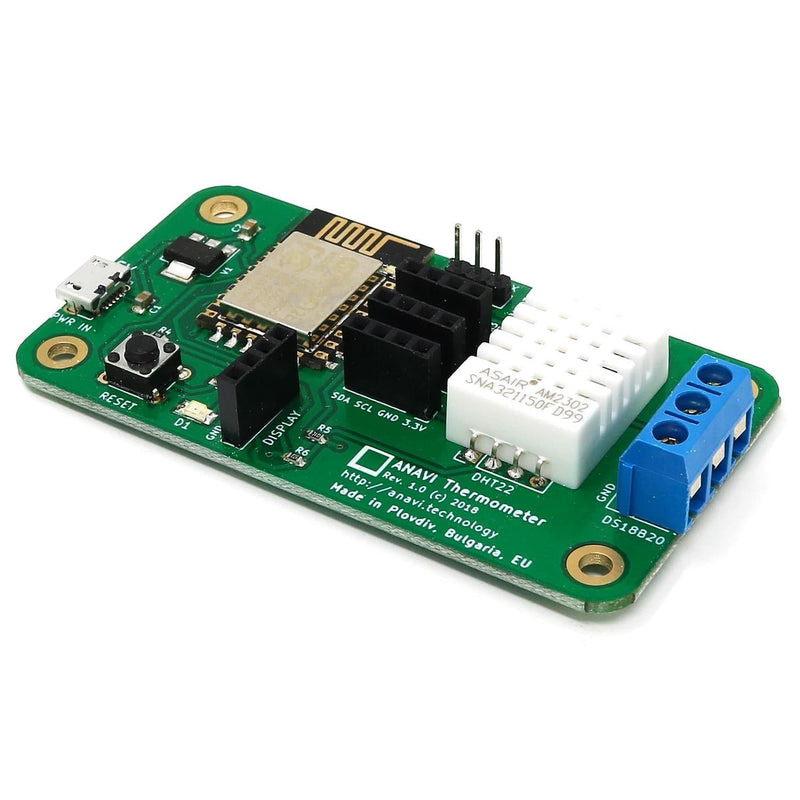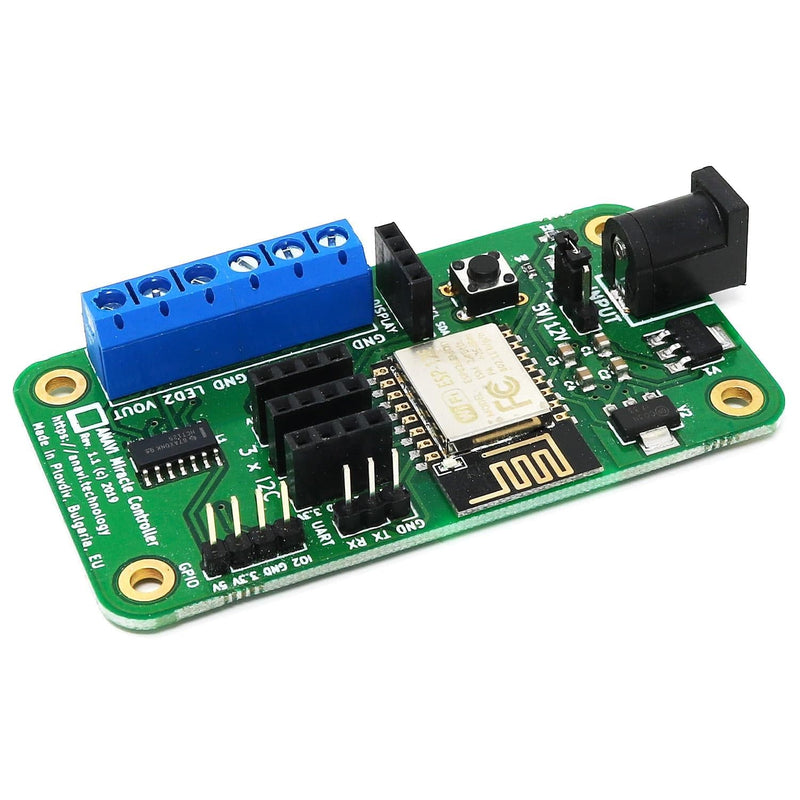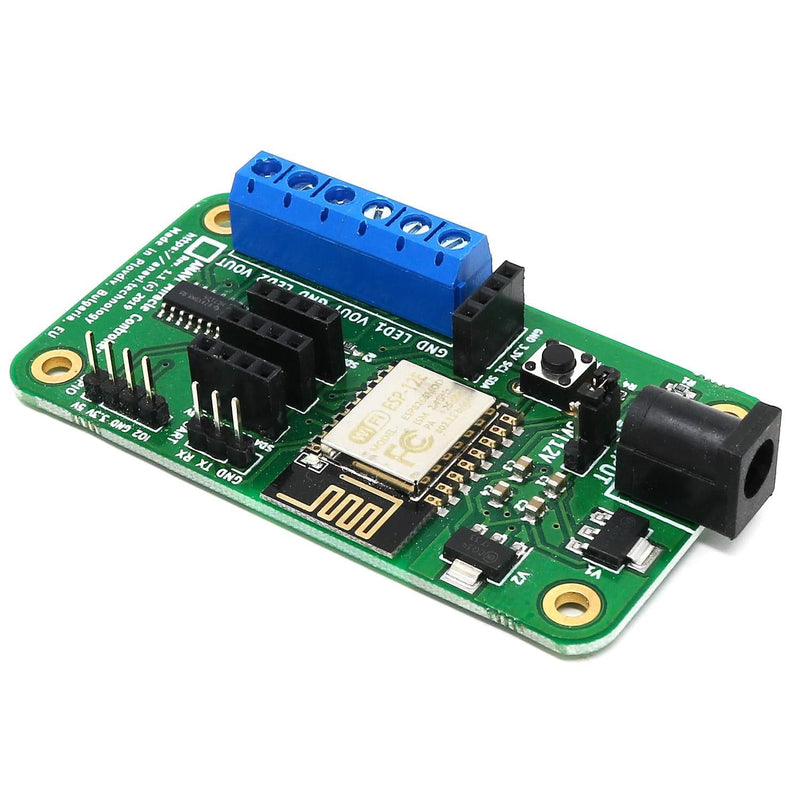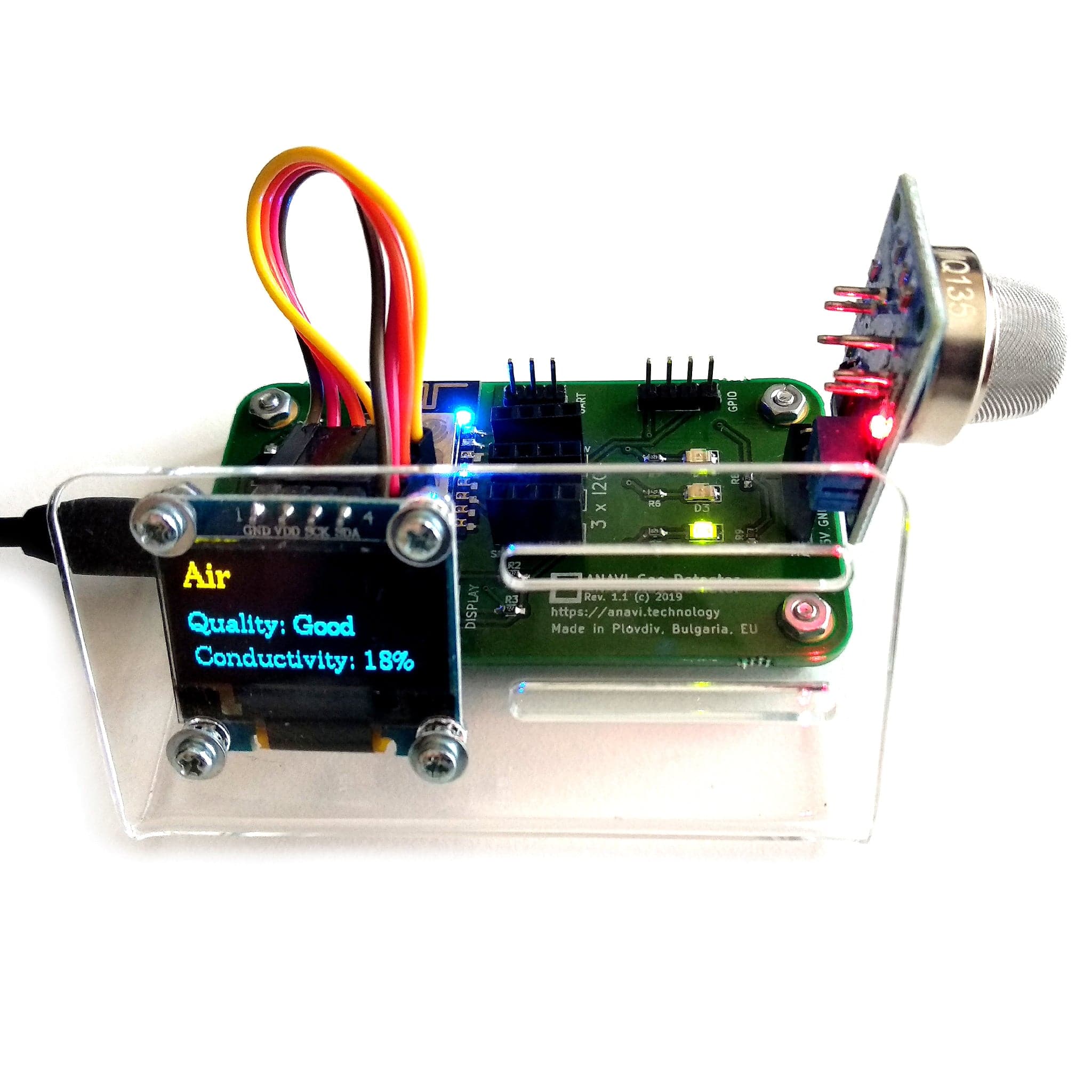
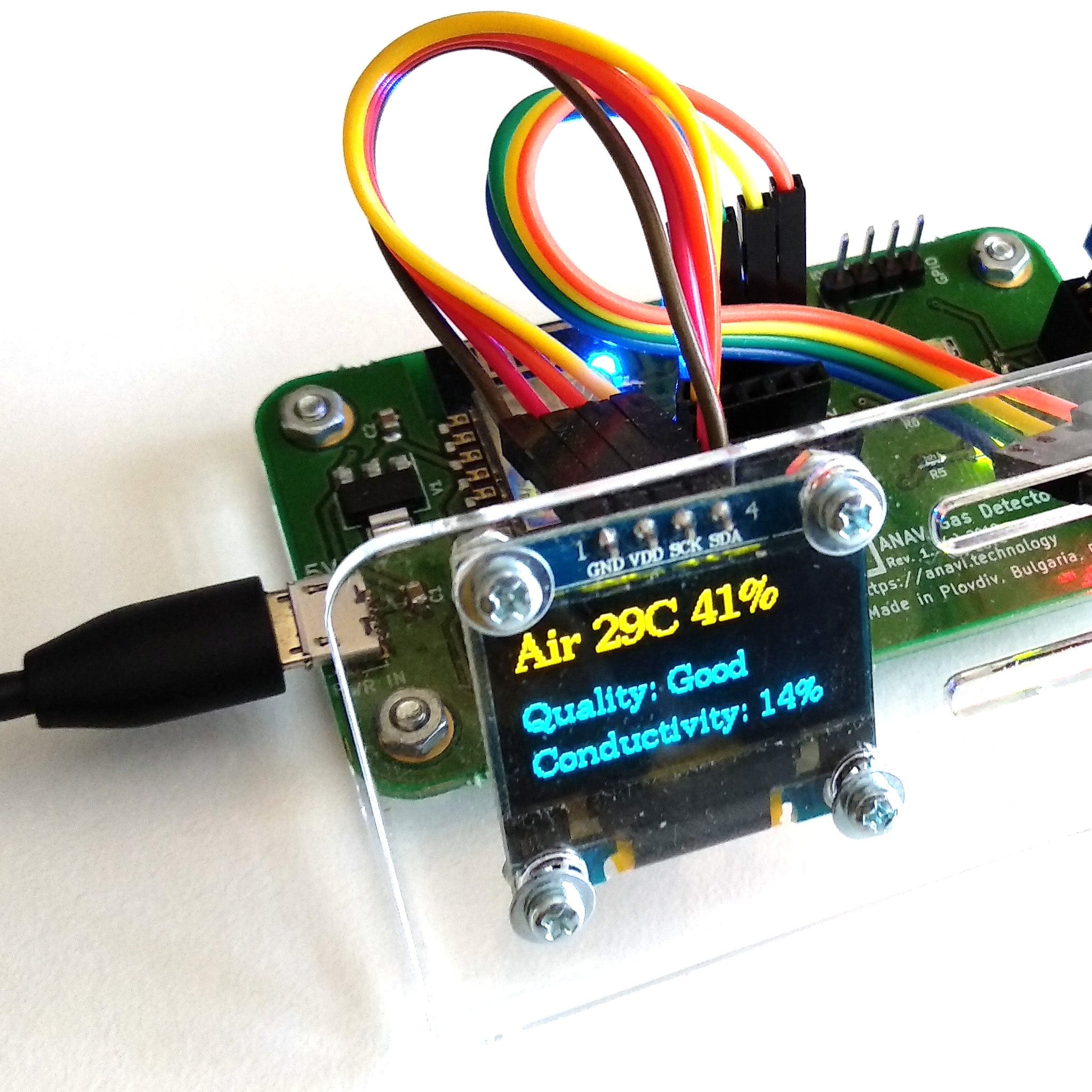
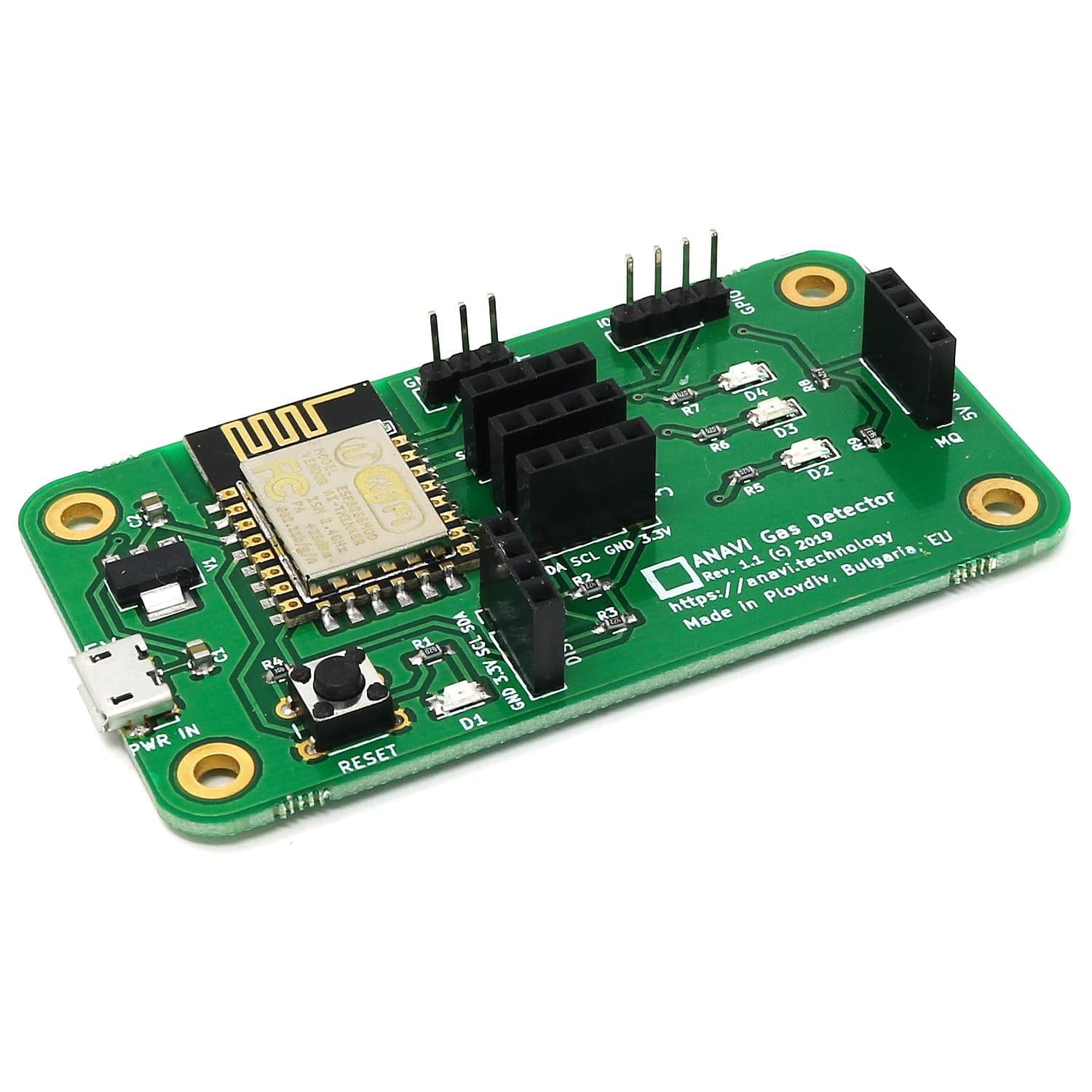
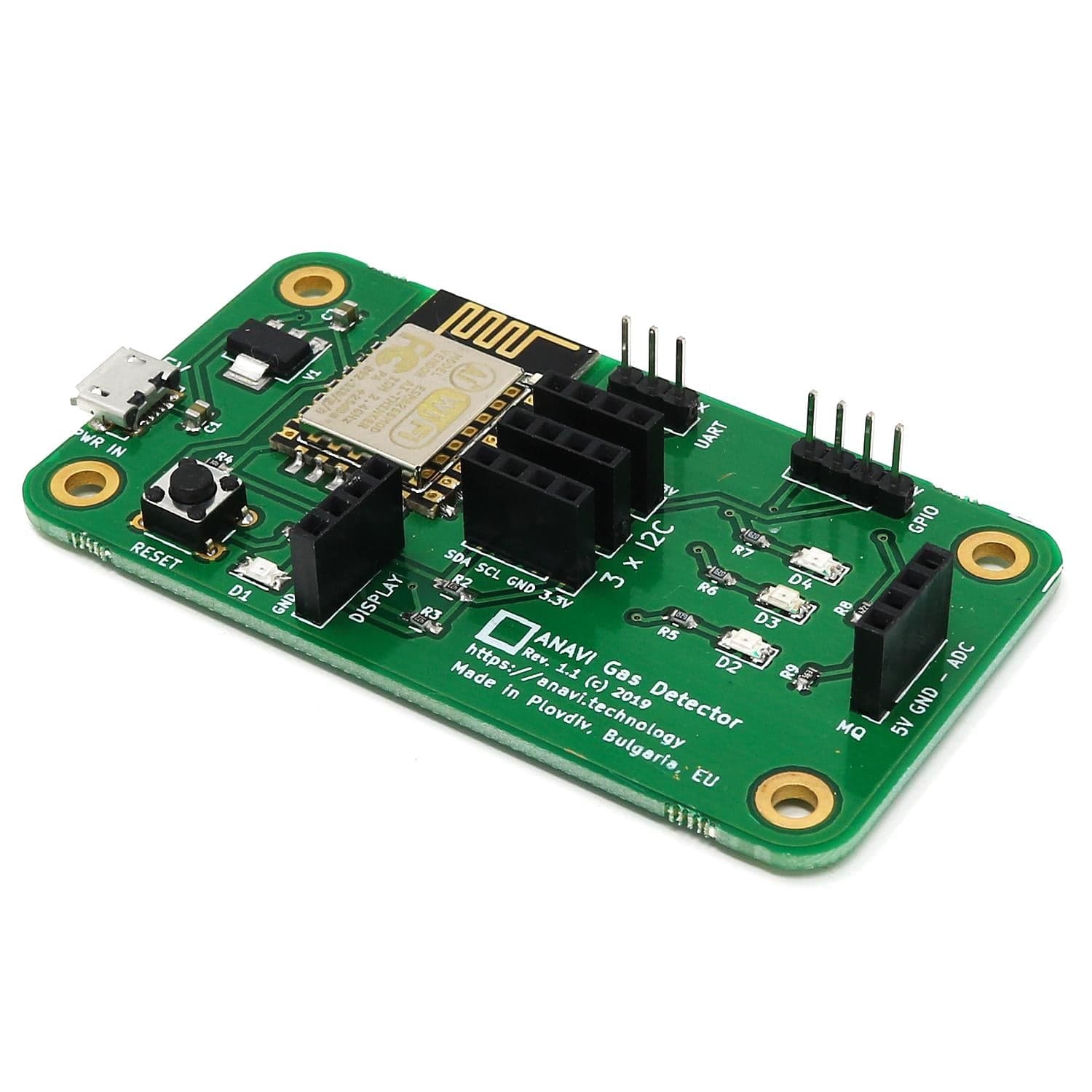
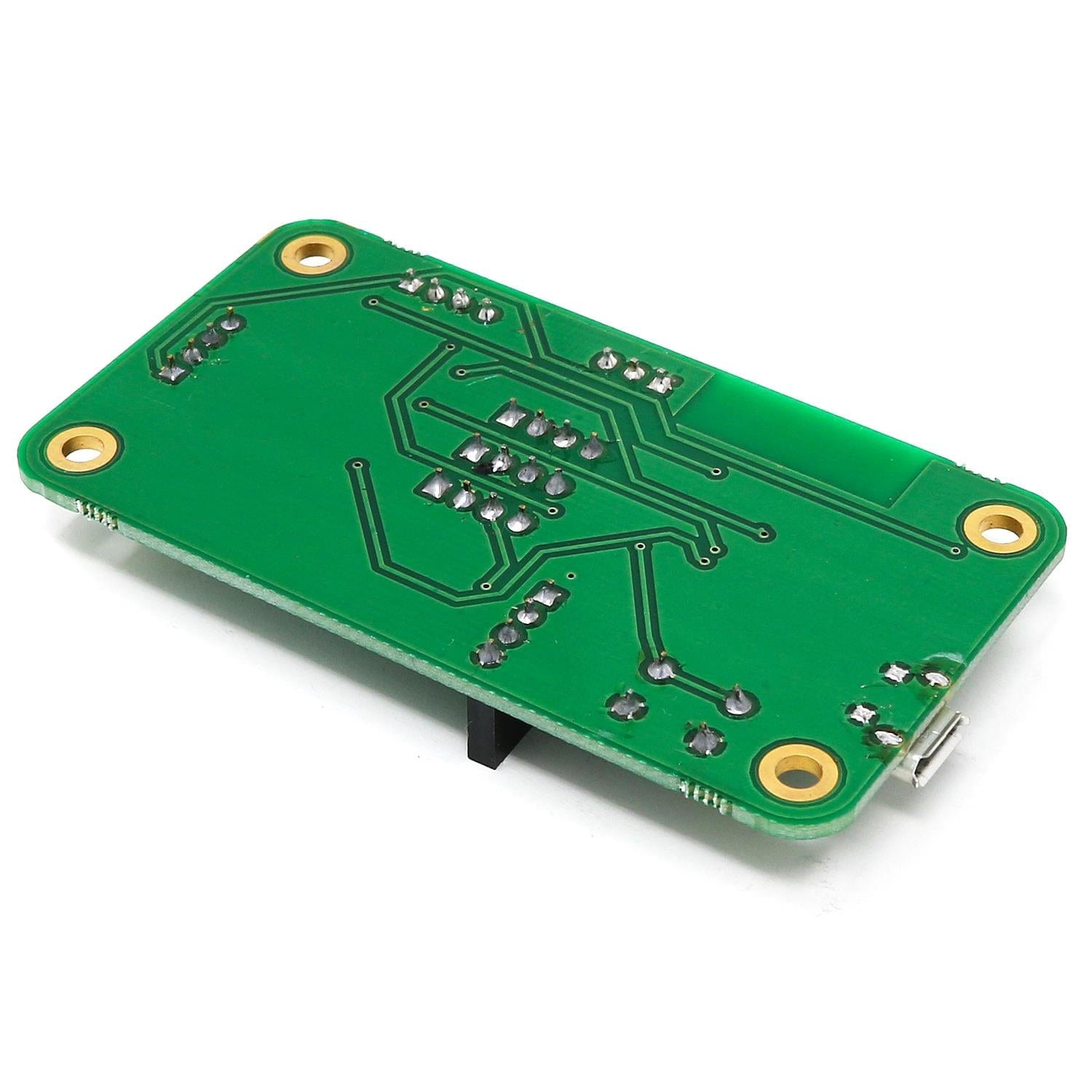
Login / Signup
Cart
Your cart is empty
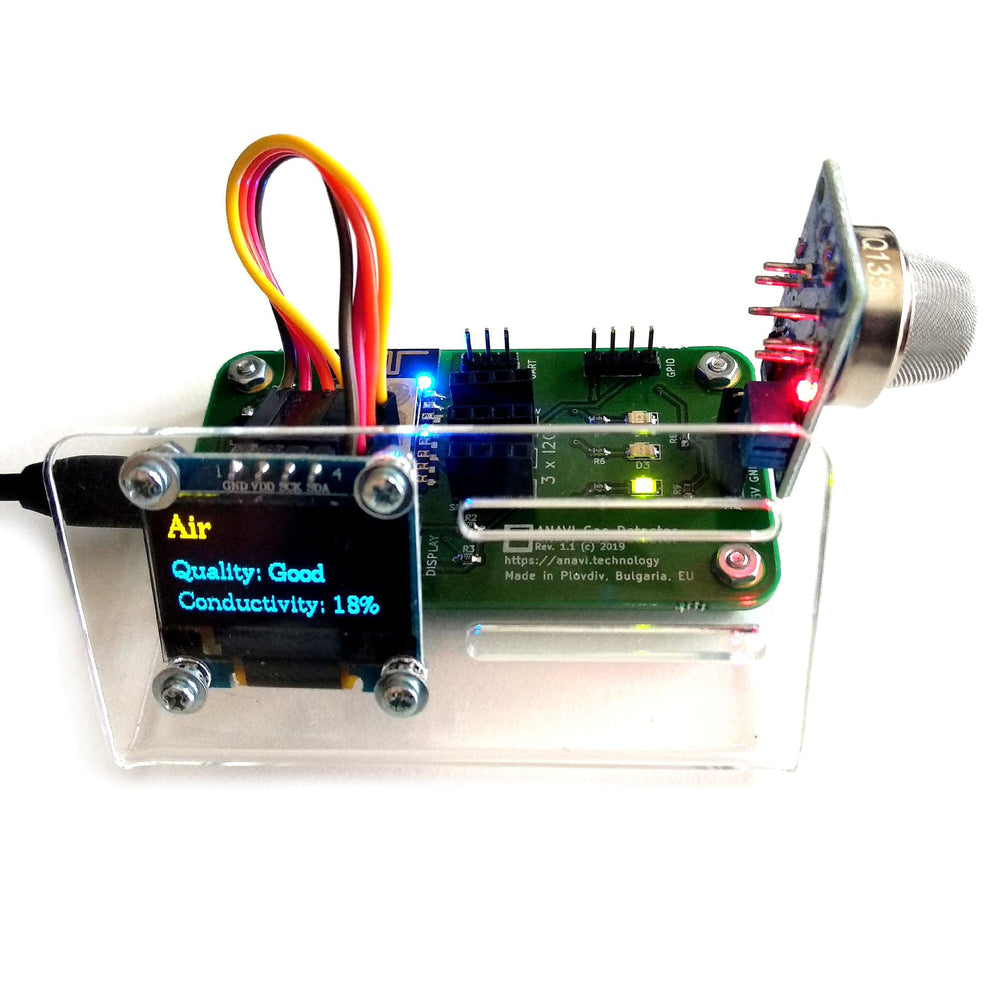
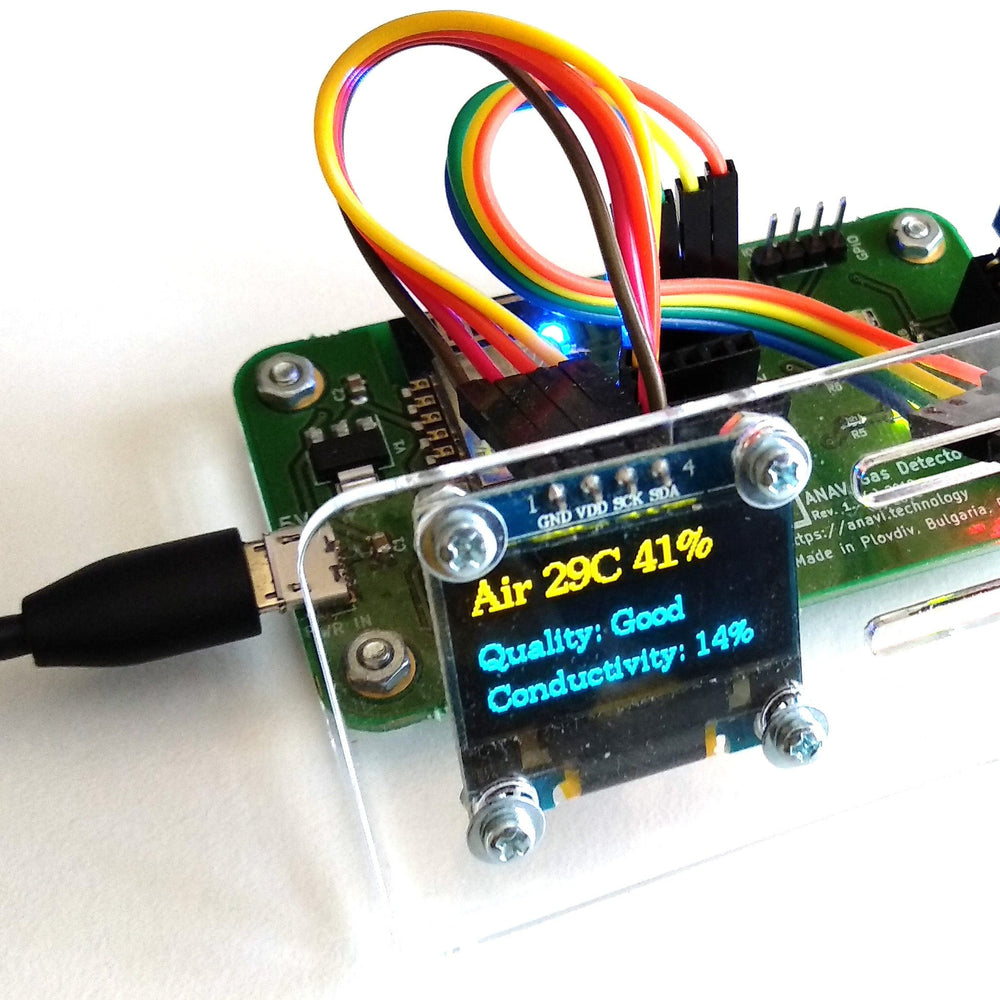
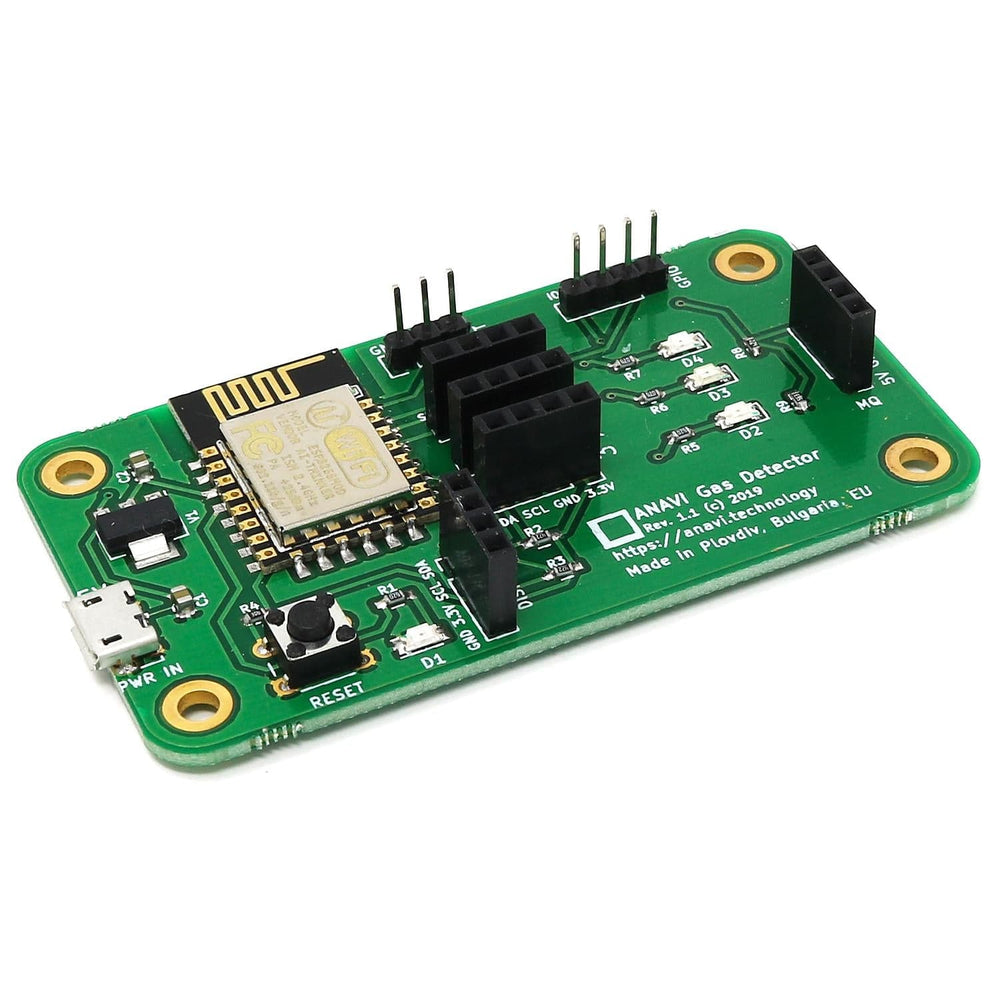
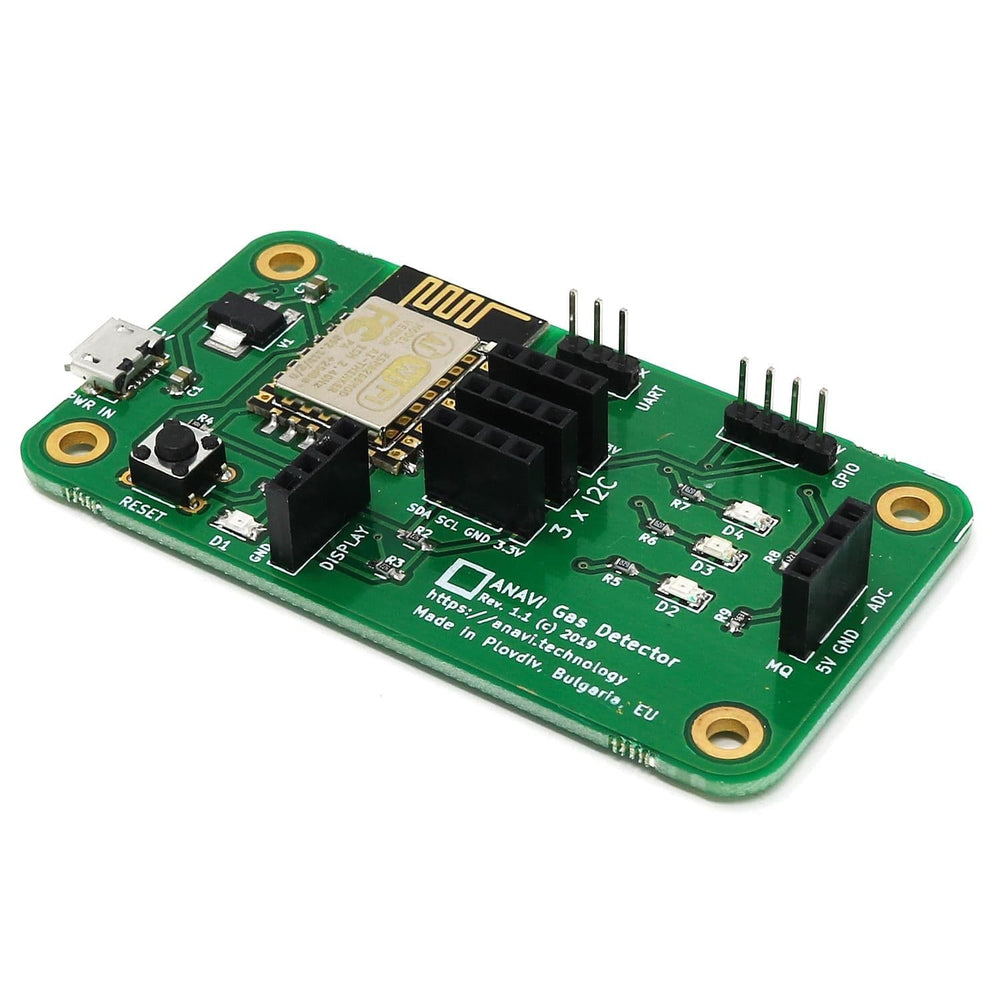
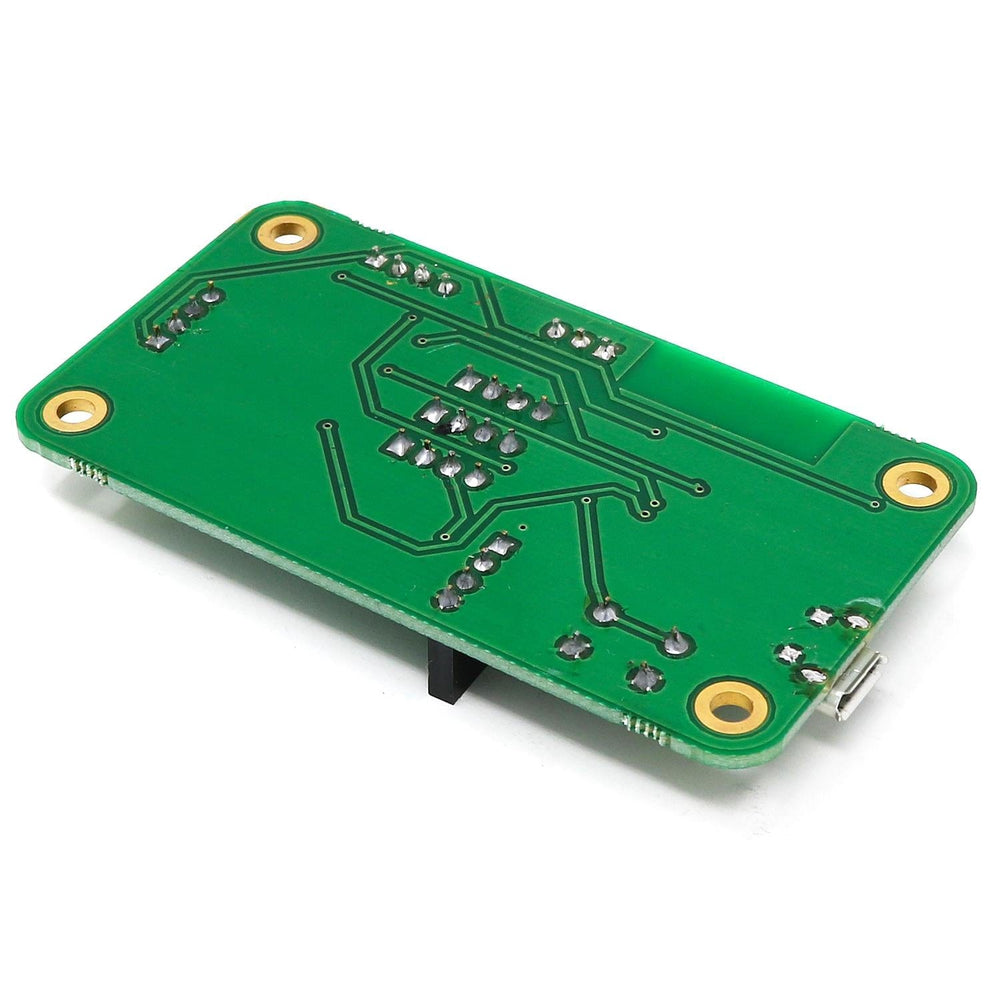
The Anavi Gas Detector is an open-source, easy-to-use, Wi-Fi compatible (ESP8266) development board for monitoring air quality and detecting dangerous gases.
It supports popular analog MQ gas sensor modules such as the MQ-135 (included), MQ-2, MQ-3 etc. It also comes with slots for a mini OLED display (included) and up to three additional I²C sensor modules.
The Gas Detector can also serve as a convenient development board for home automation. The additional slots for I²C sensor modules make it suitable for anyone interested in Internet of Things projects.
This is the starter kit which includes the Gas Detector ESP8266 board, MQ-135 Gas Sensor, 0.96" display, USB to Serial debug cable and an acrylic stand enclosure.
Note: Assembly required!
Although MQ gas sensors are cheap and convenient, there are some caveats. They require huge preheat time. The first time the sensor is turned on, it must work in a room with clean air for at least 24 hours (48 hours recommended for MQ-135) to calibrate. After that, on each boot, it takes up to a couple of minutes for the heater to provide the required work environment before the sensor can measure correctly.
MQ sensors detect gases in the air to which they react, but they cannot provide exact information about specific gas in parts per million (ppm). Over time, the sensitivity of the MQ sensor drops, therefore it is recommended to change the sensor periodically. Because of this, ANAVI Gas Detector doesn’t have any built-in MQ gas sensor and the user can easily replace only the sensor.
Using an analog-to-digital converter (ADC), The Anavi Gas Detector reads the data from the sensor. Our open-source software is specially developed for the MQ-135. Depending on the analog output value of the sensor, the Gas Detector determines whether the indoor air quality is good, moderate, or poor. This information is shown on the mini OLED display (if attached) as well as on the green, yellow, and red indication LEDs on the board.
The included MQ-135 sensor has a Tin Dioxide (SnO2) sensitive layer. This sensor is used in air quality control equipment for buildings and offices because it is suitable for detecting NH3, alcohol, Benzene, smoke and CO2.
After receiving your ANAVI Gas Detector please consider upgrading it to the latest stable version of the default open-source firmware.
The Anavi Gas Detector is an entirely open source project that combines open-source hardware with free and open-source software. It has been certified by the Open Source Hardware Association under UID BG000018.
Developers can easily modify and adjust the software for other MQ gas sensors, for example, MQ-2 or MQ-3. The UART pins on the Gas Detector ensure that custom firmware can be flashed onto the board.






